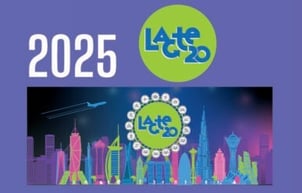"Hybrid event" may well be the word of the year within the event industry. Having become the talk of town, the concept of hybrid events has been sending seismic waves across the events industry, sparking event planners' creativity and imagination beyond the constraints of physical venues.
Hybrid events offer unique event opportunities as we enter a half-digital, half-physical world. According to EventMB, "66.5% of event organisers plan to use hybrid as their go-to format once in-person events resume.”
But what exactly is it that has more the majority of event planners turn to Hybrid?
The six big benefits of hybrid events
While the amount of virtual events hosted every day continues to increase, event formats that heavily rely on a physical venue are slowly coming back. We're all longing to meet in person and the Zoom fatigue has certainly led to a higher urge to physically interact. But the world has changed, and the way we live and conduct business will never be the same again.
The virtual component and a fast-evolving event technology landscape offers event planners the opportunity to create stunning events for both on-site audiences and one for those connecting virtually.
1. Scale your event
In-person events come with two big constraints - one being that attendance is often limited by venue size, and the second one being the ability of attendees to take time off, travel and pay for associated cost. The shift to virtual has demonstrated that physical barriers need not stand in the way of reaching a large, globally distributed audience.
The Atlantic, for example, witnessed thirteen-fold attendance growth by shifting its annual festival to virtual. Combining the best of both worlds, allows event planners to draw on their full reach potential to dramatically expand attendance.
A great example for the opportunities hybrid brings is Coachella Valley Music and Arts Festival. With limited tickets available, and many millions more wating to attend, the Coachella team decided in 2020 to bring the experience to homes across the globe. The festival invested heavily in live streaming on their Youtube channel. And while tickets holders attended the live event as usual, for music fans who couldn't make it, this move toward a hybrid event was a game changer. A new term, Couchella, was born - adding private satellite parties at home on the couch into the festival mix. Today, the Coachella Youtube channel has grown to over 1.66M subscribers.
Ultimately, hybrid events can help you increase your reach, website traffic, business leads, and your ticket sales and sponsorships.
2. Unlock your audience engagement potential
Hybrid events can take on many formats, from providing on-demand recordings post event virtually to an interconnected experience. A hybrid event can be much more than just live streaming the stage to Youtube. It unlocks the ability of all participants - in-person and online - to engage with each other, with speakers and with the content. Offering the opportunity for event attendees to share ideas, interact with presenters and network with peers in real-time, ultimately transforms passive spectators into active participants.
Read more on tools, tactics and tips to drive audience engagement in this blog article.
3. Expand accessibility and inclusivity
Hybrid allows for more inclusive events. Fully on-site events are location-bound. The only people who can attend are those who have the the resources, availability, health—to travel there.
Not only does this limit your attendance but also the attraction of top-shelf presenters who may not be able to commit to a full day at your event. Providing a virtual entry point to your event means you can bring in people from anywhere in the world, enriching your content with a diverse set of perspectives.
Virtual event technology and services make it happen. Not only connecting people across the globe, but providing your diverse participation groups with added value from tools such as live interpreting, captioning, sign-language interpretation or screen reading.
Working with a remote simultaneous interpretation (RSI) provider such as Interprefy, both on-site and virtual attendees can access live translations - either on their mobile phone or through a Interprefy integration into your chosen event platform. Meaning no matter where your audience attends, a professional and subject-savvy interpreter can translate the speech into their preferred language at any time.
Find out how you can improve the diversity and inclusion of your online event in this blog article.
4. Get more event data and audience insights
Traditionally, event planners had to rely on general KPIs such as registrations or attendance to determine success. But over the last year, virtual event platforms have been providing a wealth of granular data and insights.
You can centralise and measure attendance and engagement activities in an event platform that supports hybrid. By having a central place your virtual and on-site attendees use to register, purchase tickets, connect and watch on-demand content, you gain valuable insights into your event performance. You can access online analytics on how attendees engage with your event, which sessions they join, how long they stay and which topics drive engagement.
This will ultimately help you better understand your target audience, fine-tune future events as well as align your marketing and business strategies going forward.
5. Improve your carbon footprint
From travel to accommodation to catering to material waste - when you consider all the elements of an in-person event, your event's carbon footprint can look quite scarily. A report by Hope Solutions suggests the UK events industry alone emits 1.2bn kg of CO2e every year. Virtual events expend up to 40x less carbon emissions compared to on-site events, another study concluded earlier this year.
The shift to virtual has helped bring down the industry's impact on emissions dramatically. And by continuing to embrace the virtual component, event planners can contribute to a greener future.
6. Stay agile and prepare for the unexpected
One of the things the past year has taught us is that we need to plan for the unexpected. We cannot plan for all possible disruptions, and need to bring agility into our planning to ensure events can continue. Building a hybrid event that does not bolt-on streaming, but equally cares about virtual attendees as they do for in-person attendees, can help reduce risk of cancellation.
Conclusion
Hybrid events have not been born by the pandemic but have been around long before social distancing was invented. But the past year has changed the way we live and work that created new and unique event opportunities.
As we enter a half-digital, half-physical world, we can attract and engage attendees all over the globe. No matter whether your attendees are sitting in a conference centre, in a café on the other side of the globe, or on the couch with their family, they'll want to tune in.
Looking to find out how Interprefy can support your multilingual hybrid events? Book an introduction call with us today.
Want to read more?




 More download links
More download links



